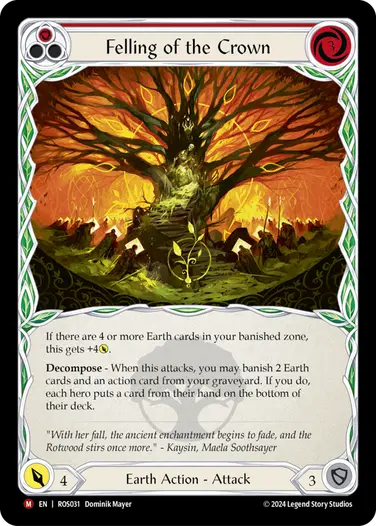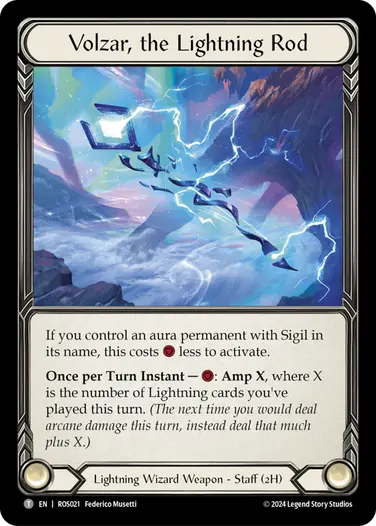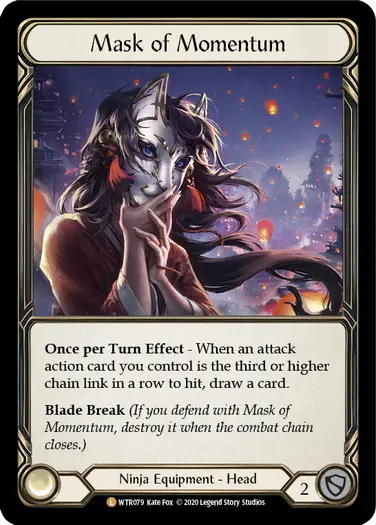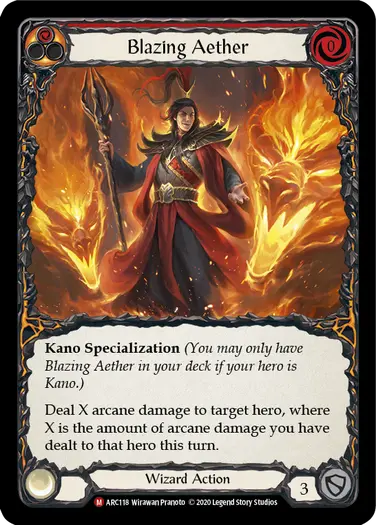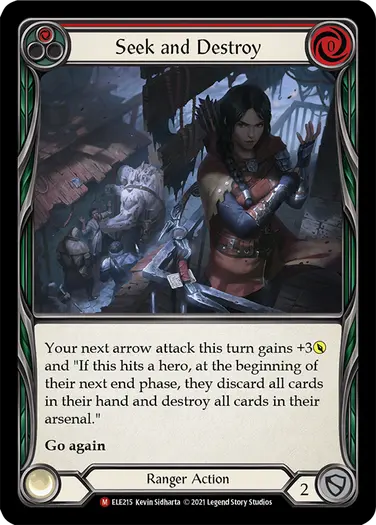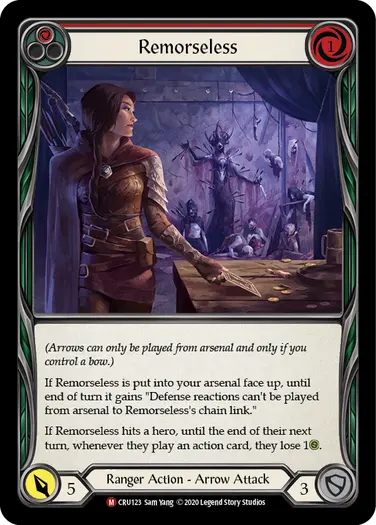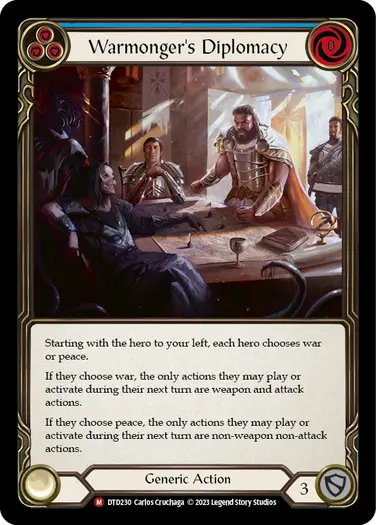As Flesh and Blood expands its card pool and mechanics periodically, the ways players communicate through the common language of playing the game evolves as well. Drawing the right lines regarding in-game communication practices and what is allowed can often be challenging and difficult to understand. Rules and Policy Manager Joshua Scott is back to dive into the recent updates to the Tournament Rules and Policy document that attempts to clarify the evolution of Flesh and Blood’s note-taking, game-layout and outside assistance policies.
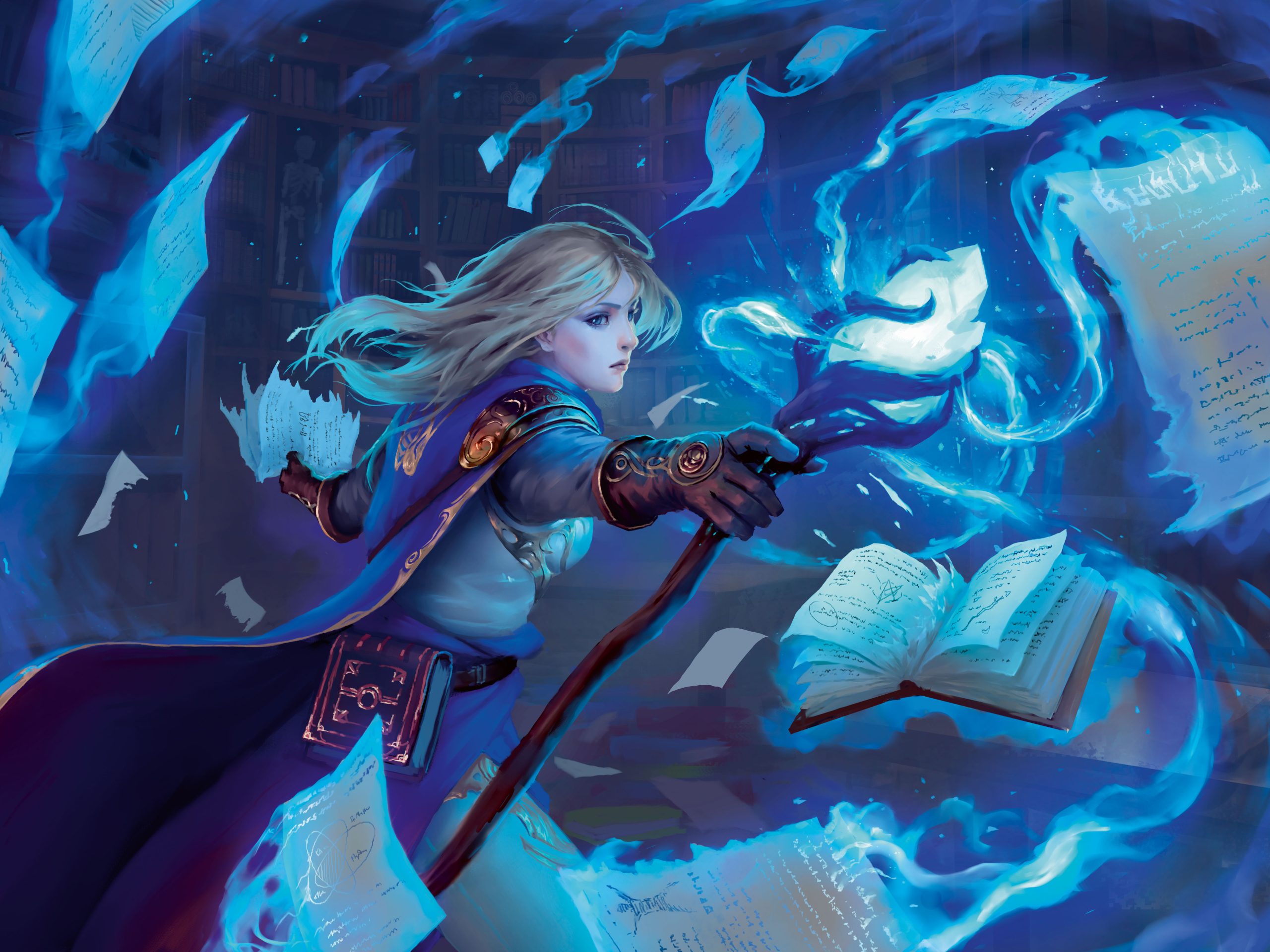
General Philosophy
Before we dive in, it’s important for us to define note-taking. Broadly speaking:
> Note-taking is the use of aids to record information.
What this means is, whenever you use something to help you remember (dice, markers, writing stuff down), you’re essentially note-taking. This may include:
- Writing things down
- Using dice to represent numbers
- Putting markers on objects
- Arranging and/or sorting cards
Our goal at Legend Story Studios has always been to bring people together in the Flesh and Blood through the common language of playing great games. Our policy on note-taking stems directly from this goal and can be broken down into three main points:
- Facilitate clear, consistent, and correct communication between players.
- Test players’ mental abilities and memory, rather than their note-taking skills.
- Engage players in playing the game and reduce the logistics needed to play at the most competitive level.
First and foremost, we want to ensure that players have the agency to communicate clearly and consistently with their opponents. We explicitly allow players to use markers and dice, and to write down numbers and notes that represent parts of the current game state so that the game can be played correctly. This is an essential part of communication while playing the game, especially when players do not share a common language outside of the game. Note that this does NOT cover elements of the game that are not needed to play correctly (e.g. writing down the turn number).
Second, Flesh and Blood is a skill-testing game and one of those skills is a player’s memory. For example, remembering what cards you or your opponent have pitched is a core skill-testing element that highlights high-level play. Allowing note-taking in all forms would eliminate this element and trivialize many parts of the game (e.g. pitch stacking with Kano). As such we have a strong stance against note-taking that infringes on this part of the game.
Third, we want players to focus on the cards and the opponent in front of them rather than a notepad. If note-taking was a core part of improving a player’s performance, we feel that players would disengage with their opponent in favor of tracking cards and looking at papers off to the side. There is simply too much information that could be recorded to gain a slight advantage, and players would be spending a lot of time recording and reading rather than playing.
With that being said, there is certainly a place for leniency when it provides an overall benefit to the gameplay experience and doesn’t infringe on the skill-testing elements of the game. We want to give players the tools they need to play the game effectively, while restricting tools that would interfere with playing the game as intended. One such policy change is the approach to ordering graveyard and banished zone cards.
As of October 28, 2024, players may “sort” their graveyard and banished zones for relevant effects, such as sorting Earth cards for decompose and hero abilities like those on Florian and Verdance. This would involve grouping Earth and non-Earth cards together so you can quickly determine the number of relevant cards for those effects. However, the policy still prohibits sorting for other purposes, like sorting by name and pitch to determine what cards are left in your deck. Judges may ask players to justify why they’re sorting their graveyard/banished zone, to determine whether this policy is being followed.
What can I take notes on?
The Tournament Rules and Policy document outlines the acceptable forms of note-taking. As a rule of thumb when determining if note-taking is acceptable, ask yourself;
> Would I be penalized if I forgot this information?
If the answer is yes, the information is probably related to the current game state and it’s perfectly fine to use note-taking to ensure that the game is being played correctly. For example:
- How many Lightning cards you’ve played this turn (for Volzar, the Lightning Rod)
- Whether you’ve hit on the last 2 chain links (for Mask of Momentum)
- How much arcane damage you’ve dealt (for Blazing Aether)
If the answer is no, the information is probably not related to the current game state, or it is not required for playing the game correctly, in which case you should not be taking notes on it. For example:
- Tracking how many turns since the start of the game.
- Writing down what cards were put to the bottom of the deck (e.g. pitched cards).
- Making calculations of future damage output (e.g. working out playlines for Kano).
While there are some minor exceptions, if you’re ever unsure about whether you can take notes about certain gameplay elements, ask the head judge of your event!
What can I do with my play-space?
When playing Flesh and Blood in an official tournament, you should always follow the standard Flesh and Blood layout. Players around the world expect to see the same arrangement of cards across from them when they sit down for a game. By consistently following this layout, it clearly communicates information about the cards without even saying a word.
While there are minor allowances such as mirroring the layout (so that your deck is on the left and your equipment is on the right), deviating from the official layout can cause major communication issues and should only be done in accordance with policy and with permission from the Head Judge.
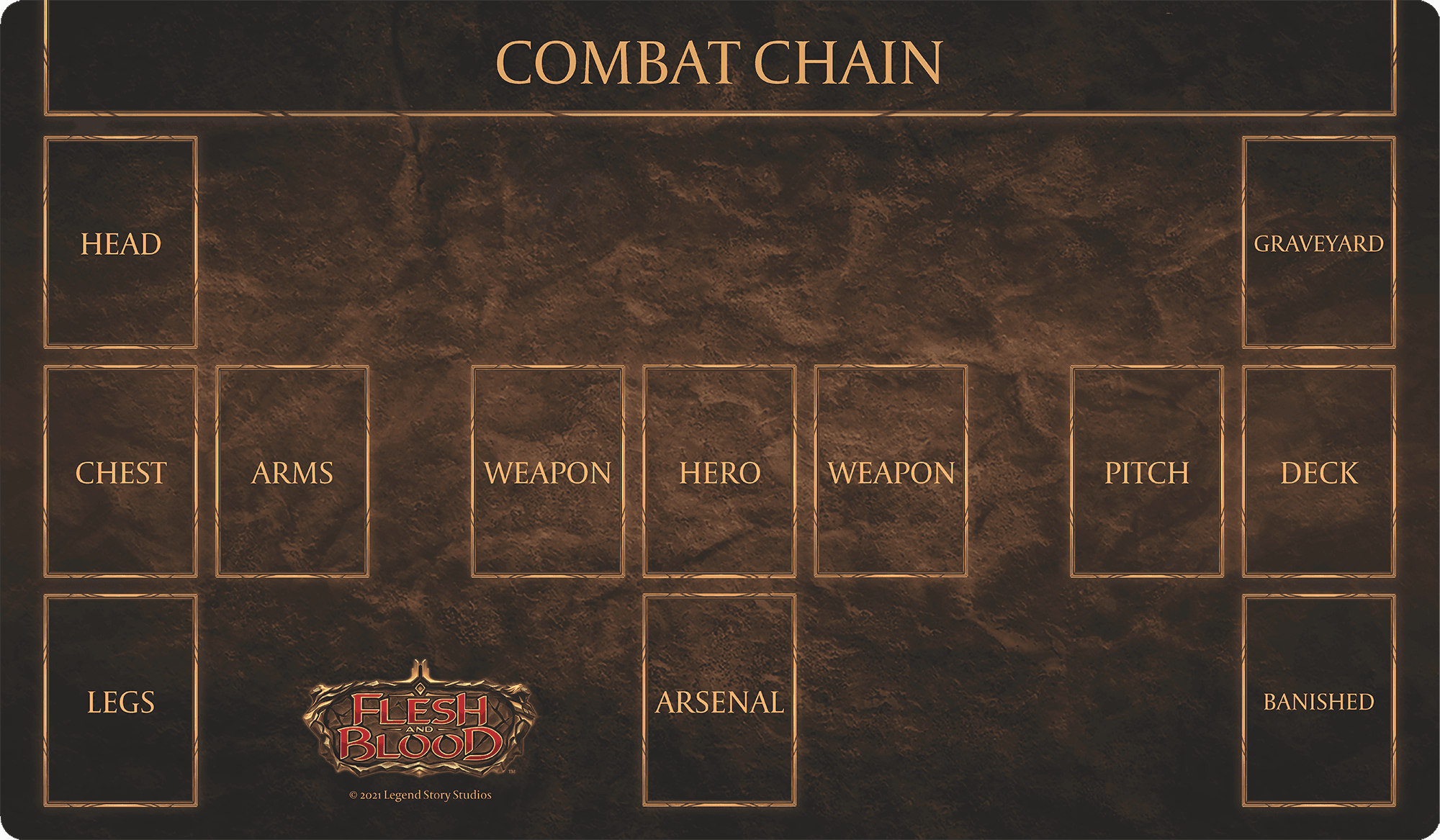
Always:
- Keep cards and permanents that you control on your side of the combat chain.
- Keep the play-space tidy. Neat piles of cards, reduce clutter and markers.
- Remove unnecessary tokens from the play-space when not actively being used in the game.
Maybe:
- You may mirror the layout, so that your deck is on the left and your equipment is on the right.
- You may reorder cards in your graveyard/banished zones into groups that are relevant to the current game state.
- You may make a separate pile for cards in your graveyard/banished zone to separate out cards that are relevant to the current game state. It needs to be clear to the opponent where those cards belong (i.e. in the graveyard or banished zone).
- You may fan out cards in a zone if those cards have functional triggers or can be played/activated.
- You may use markers to represent game information, as long as it is clear, tidy and doesn’t provide strategic information.
Never:
- Change the position of zones, especially the equipment zones or swapping the graveyard and banished zones.
- Flip equipment face down when it is destroyed – it should be moved to the graveyard.
- Put unused tokens underneath your hero – they should be removed from the play-space.
What can I do to represent “invisible” information?
Some cards can generate effects that have longer durations which may be difficult to remember over the course of a turn cycle. You can use markers, dice, or even the cards themselves to help keep communication about the game state accurate and represent information about effects like these.
Using the cards to represent any generated continuous effects and delayed triggered effects is an acceptable form of communicating what effects are active or have yet to trigger during the turn. It is still important to make sure that if you use a card this way, that it is still considered to be in the correct zone for other effects in the game.
For example, if you play Seek and Destroy, then hit your opponent with Red in the Ledger, instead of putting both cards directly into the graveyard, you could leave them to the side of the graveyard to help indicate that the opponent is affected by the delayed trigger of Seek and Destroy and the continuous effect of Red in the Ledger. Both cards are technically in the graveyard, but keeping them out until the end of the opponent’s turn can help both players play the game correctly.
Additionally, you can write down information that requires the parameters of an effect to be declared when playing or resolving cards/effects. This includes writing “named cards” down for naming effects, the value of X, any chosen modes, etc.
Quick Questions
How am I allowed to order cards in the graveyard/banished zone now?
You may, in general, group cards in your graveyard together for relevant effects.
- Earth and Action cards for decompose abilities.
- Red cards for Burn Them All.
- Blood Debt cards in your banished zone.
But you still can’t sort the whole graveyard on a whim, or with the intention to figure out additional information, like what cards are remaining in your deck. Examples of this would be:
- Order cards by pitch.
- Order cards by name.
- Order cards by type.
Am I allowed to have 3 different print versions of a card to track each copy?
Yes, as long as every card meets the criteria for being tournament legal, you may mix and match any official printings. Be considerate to ensure that your deck does not contain marked cards (i.e. you can’t discern differences between cards when they are face down in your deck), and that the cards meet the alteration policy if they have been altered.
Can I use [X] to remind me of my Fyendal’s Spring Tunic trigger?
No. The only thing that should remind you of your Fyendal’s Spring Tunic trigger is the Fyendal’s Spring Tunic card being face up in your equipment zone. Using markers, positioning cards, or writing yourself notes are all forms of either note-taking or outside assistance and would not be permitted. This includes, but is not limited to:
- A custom playmat with “Don’t forget your Tunic” printed on it.
- Sleeves with “Remember your Tunic” printed on them.
- Putting an oversized dice on your Tunic that’s obstructing the equipment zones.
- Placing your Tunic over your hero instead of in the Chest equipment zone.
- Creating a reminder card and leaving it in the arena so it has to be removed before playing cards.
Can I tattoo “Don’t forget your Tunic” on my hand?
Please don’t. In general, if you’re thinking of ways to subvert the rules on note-taking or outside assistance, you will most likely be penalized.
Can I use a dice to track the number of Command and Conquers in my opponent’s graveyard?
In general, no. Not only is it not relevant for the current game state (with very minor exceptions), but you should be responsible for your own information, not your opponent’s.
